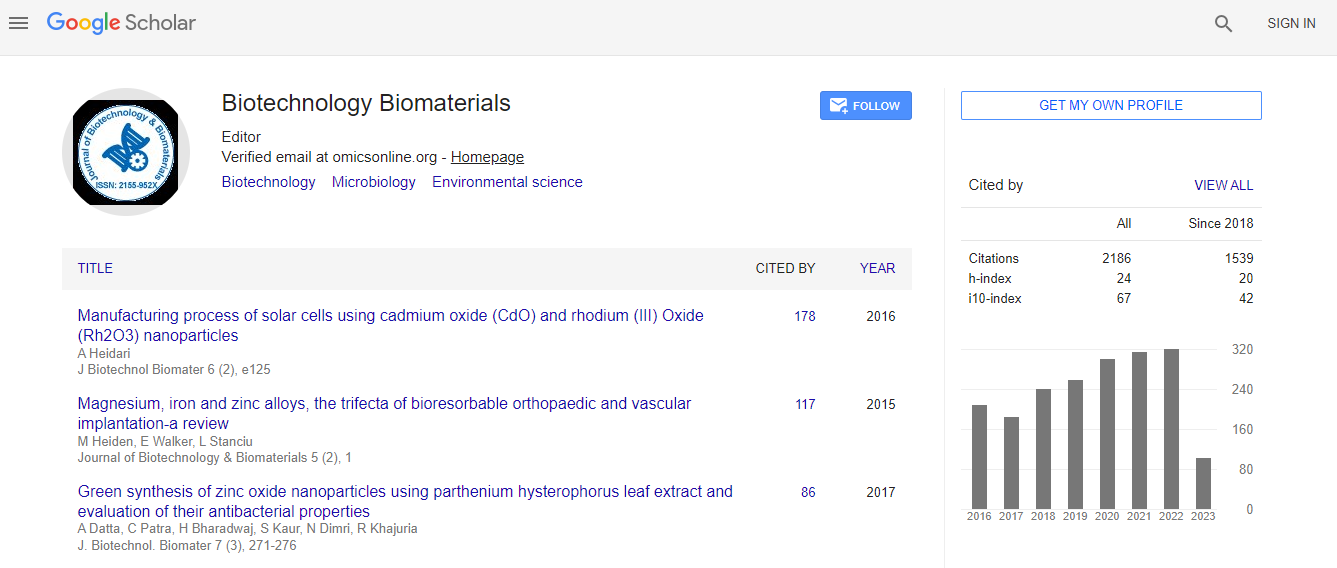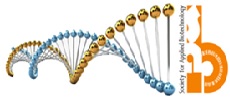Our Group organises 3000+ Global Conferenceseries Events every year across USA, Europe & Asia with support from 1000 more scientific Societies and Publishes 700+ Open Access Journals which contains over 50000 eminent personalities, reputed scientists as editorial board members.
Open Access Journals gaining more Readers and Citations
700 Journals and 15,000,000 Readers Each Journal is getting 25,000+ Readers
Google Scholar citation report
Citations : 3330
Journal of Biotechnology & Biomaterials received 3330 citations as per Google Scholar report
Indexed In
- Index Copernicus
- Google Scholar
- Sherpa Romeo
- Open J Gate
- Genamics JournalSeek
- Academic Keys
- ResearchBible
- China National Knowledge Infrastructure (CNKI)
- Access to Global Online Research in Agriculture (AGORA)
- Electronic Journals Library
- RefSeek
- Hamdard University
- EBSCO A-Z
- OCLC- WorldCat
- SWB online catalog
- Virtual Library of Biology (vifabio)
- Publons
- Geneva Foundation for Medical Education and Research
- Euro Pub
- ICMJE
Useful Links
Recommended Journals
Related Subjects
Share This Page
Bio-conjugation of metal-organic frameworks with bacteriophage for bacterial detection
6th World Congress on Biotechnology
Neha, Sanjeev Bhardwaj, Jyotsana Mehta, Manoj Nayak and Akash Deep
CSIR-Central Scientific Instruments Organization, India
Posters-Accepted Abstracts: J Biotechnol Biomater
Abstract
Food-borne disease outbreaks caused by the antibiotic resistant bacteria lead to severe threats to human health and thus are of major concern worldwide. Recently, the metal organic frameworks (MOFs) have been proposed as useful materials in the development of small molecule sensors. The MOFs possess certain excellent characteristics for example tunable porosity, high thermal/chemical stability and optoelectronic properties which make them exciting materials for the development of sensitive bio-sensors. It is imperative to explore techniques for the bio-conjugation of the MOFs with biomolecules to construct the desired specific sensors. The present research is aimed on bio-conjugating the MOFs with bacteriophage which are highly specific and stable natural alternative of other bio-recognition molecules including antibodies, nucleic acids and enzyme. Bacteriophages can be easily produced from natural wastewaters or soil in a cost effective manner and they can differentiate between dead and viable cells. The bacteriophages are particularly advantageous over other bio-recognition molecules (antibodies, nucleic acids, enzymes) which pose certain limitations e.g., high cost of production, instability under varying physiological conditions, ethical issues concerned with antibody production from animals and inability to differentiate viable cells from dead ones. In the present work, an amine functionalized luminescent MOF (IRMOF-3) was synthesized using solvothermal process at room temperature. Bacteriophages specific to Staphylococcus bacterial sp. were conjugated to the MOF surface in an oriented manner using covalent chemistry. The conjugated MOFs were characterized using several techniques, viz., UV-vis spectroscopy, FTIR, photoluminescence spectrophotometer, XRD and SEM. The above conjugated MOFs can be explored further for the detection of bacteria by measuring change in luminescence intensity of MOF for development of convenient, rapid, specific and effective sensors of bacterial contamination in food products.Biography
Email:
dr.akashdeep@gmail.com
 Spanish
Spanish  Chinese
Chinese  Russian
Russian  German
German  French
French  Japanese
Japanese  Portuguese
Portuguese  Hindi
Hindi 
